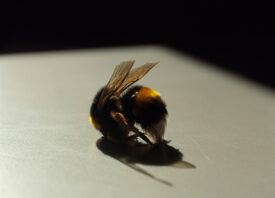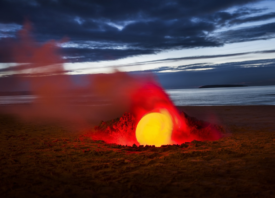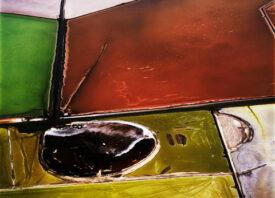Search this site
Complex Portraits of Afrikaners During Apartheid


Born in Randfontein, a gold-mining town 70 kilometers west of Johannesburg, David Goldblatt (1930-2018) was raised in a middle class, liberal white Jewish family who had come to South Africa in the 1890s to escape persecution in Lithuania.
Though not politically active, his family practiced basic tenets of morality, treating all whom they encountered — Afrikaners, Blacks, and Indians — with fundamental respect. It was not always returned in kind; Goldblatt remembers experiencing anti-Semitism as a child from the colonizers, unclear why they felt the need to degrade him for simply being alive.
In 1948, the very year Goldblatt graduated high school, the National Party came into power. “I remember on their election poster outside my father’s shop in the main street of Randfontein a caricatured Hoggenheimer, the archetypal Jewish capitalist,” Goldblatt wrote in 2006 for an essay that appears in Some Afrikaners Photographed (Steidl).
“Besides the swart gevaar [Afrikans for ‘Black danger’] Jewish capitalists were the ultimate evil in the eyes of the party. Right-wing Afrikaners made no secret of their sympathies for the Nazis and their hatred of Jews….Aside from a declaration of prejudice against Jews and Indians, this was a government that subscribed to the notion that whites were inherently superior to Blacks. These things weight heavily on us.”
After marrying in 1955, Goldblatt and his wife decided South Africa was no place to raise children — but then his father got sick, and Goldblatt realized he was unable to leave the family business. “His customers were from a very broad spectrum: farmers, Black and white miners, mine and municipal officials, magistrates, railway conductors, doctors, teachers; Black and white…. He treated everyone with dignity, and this rubbed off both on customers and staff,” Goldblatt recounts.
“Serving Afrikaners, I found almost inspite of myself that I liked many of them….Yet, withal, I was very aware that not only were most of these people Nationalists, strong supporters of the Party and its policies, but that many were racist in their very blood….I was much troubled by the contradictory feelings of liking, revulsion, and fear that these Afrikaner encounters aroused in me and felt the need somehow to come closer to these lives and to probe their meaning for me. I wanted to do this with the camera.”
By this time, Goldblatt had long been making images of the conditions of life for Black South Africans living under apartheid. Though he did not see himself as a missionary, political activist, or photojournalist, the desire to document the conditions of life in South Africa in its harrowing complexity drove him to make portraits that are at once profound intimate and even empathetic, therein invoking a torrential feeling of abject horror.

In his quest for find the humanity beneath the demonic drive to subjugate and oppress the natives of familial adopted home, Goldblatt has created a complex portrait of the banality of evil. For every image that suggests, “Racists, they’re just like us!” there’s the terrifying knowledge that the true monsters of this earth are mere human beings conditioned to believe they have the right to treat people as things which are not, and will never be, theirs.
Some Afrikaners Photographed is a portrait of white supremacy from the outside looking in, an attempt to find something universal about humanity, even though that attitude goes unreturned. Goldblatt’s thoughtful portraits are accompanied by detailed captions that add another layer of humanity that makes the photographs even more disturbing as records of pathos and privilege.
The photographs, rejected by New York publishers who had no interest in white supremacy in Africa, were published in 1969 by Camera, a photography magazine based in Switzerland. The publication was greeted in South Africa with rage, as Dagbreek en Sondagnuus, the only Afrikanans-language Sunday newspaper at the time, published a front page article with the headline, “Blood will boil over these photos.” In the words of Cam’ron to Bill O’Reilly, “You mad!”
In “The anxiety of identity and Some Afrikans,” an essay that appears in the book, Ivor Powell describes some of the language used in the article then notes, “This is political dissembling under the guise of art criticism. The writer is more anxious to deny the perceived reality than to engage with the quality of the rendering.”
Hit dog will holler, and for all of Goldblatt’s sensitivity, there was no escape from the truth. “Good can be radical; evil can never be radical, it can only be extreme, for it possesses neither depth nor any demonic dimension yet–and this is its horror–it can spread like a fungus over the surface of the earth and lay waste the entire world,” Hannah Arendt wrote in Eichmann in Jerusalem: A Report on the Banality of Evil
“Evil comes from a failure to think. It defies thought for as soon as thought tries to engage itself with evil and examine the premises and principles from which it originates, it is frustrated because it finds nothing there. That is the banality of evil.”


All images: © David Goldblatt. Courtesy of Steidl.


